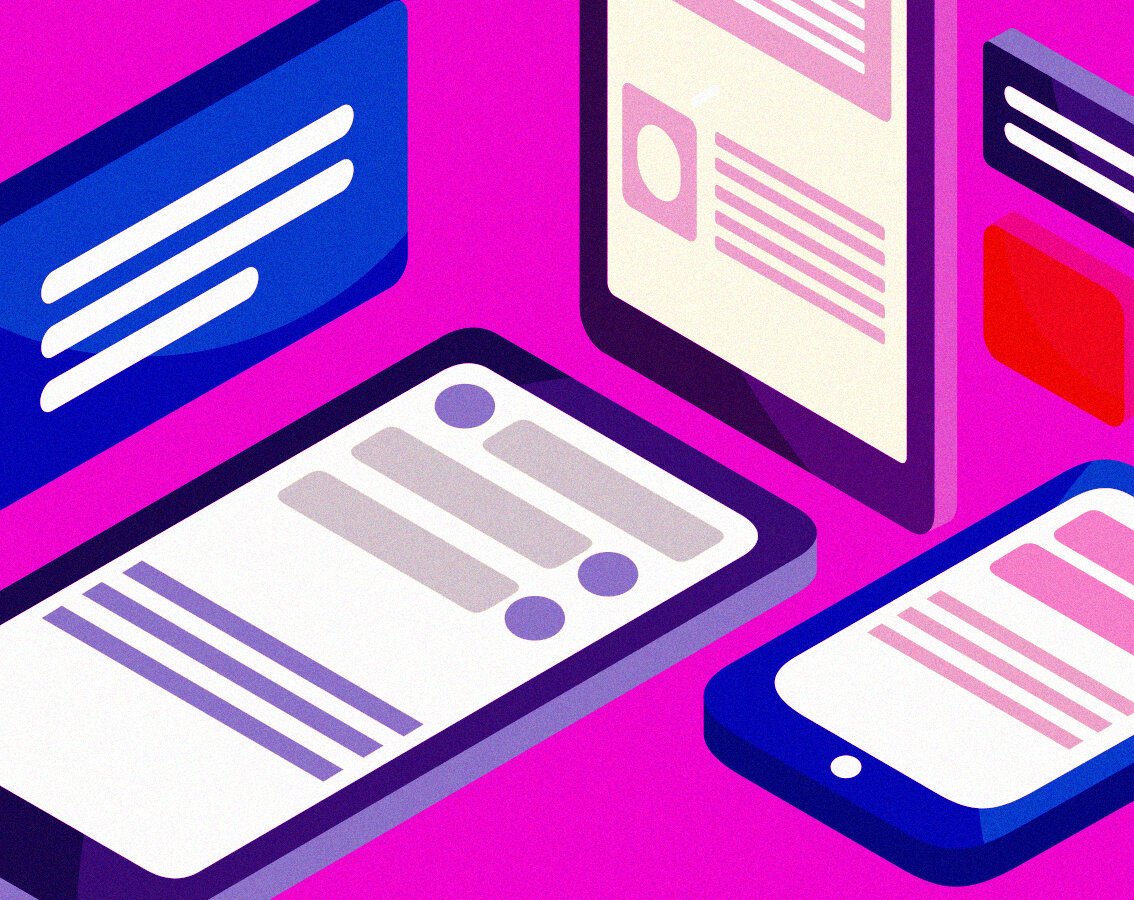blog
Crafting an Impactful Mobile App Strategy
By Mohan S App development Customer Experience June 29, 2023

In this digital age where apps have become an essential part of our daily lives, it is crucial to understand the importance of a well-defined app development strategy to increase your chances of building a successful and useful mobile app.
A well-defined strategy and careful planning are two vital things for creating a successful app. Mobile app development projects can experience challenges like scope creep, missed deadlines, and budget overruns if they lack a clear roadmap and direction.
A well-defined app development strategy is crucial for creating a successful, impactful app in today's competitive market. It optimizes resource utilization, increases user satisfaction, minimizes risks, clarifies different aspects of costs and saves cost of app development. Adopting a user-centric approach and continuous improvement increases the likelihood of creating an app that meets expectations, delivers value, and achieves long-term success.
How to Create a Strategy for App Development
Successful app development requires more than just coding and design skills. A clear and well-defined strategy is necessary because it acts as a road map for the entire development process. A well-designed strategy lays the groundwork for a successful app by identifying the objectives, target market, features, the general strategy to be used and how long will it take to launch the app.
Setting the stage for a successful and impactful app means developing a clear strategy for app development. It offers direction, focus, and a user-centric approach; it maximizes resources; it gives an advantage in the marketplace; it reduces risks; and it enables ongoing evaluation. We will go into detail about the procedures for developing a successful app development strategy in the sections that follow.
Understanding the user and the market
For an app to be successful, the user and the market must be understood. It offers insightful information about the user's needs, preferences, and behavior as well as the market environment. The features, design, and overall strategy of the app are shaped by this knowledge, creating a more pertinent and interesting user experience.
Here is why understanding the user and the market is important and how it helps in app development:
1. User-Centric Approach: For an app to appeal to users' needs and preferences, it is essential to comprehend the user. Developers can learn about user expectations, pain points, and desired features by conducting user research, such as surveys, interviews, and usability testing. This information enables the creation of user-centric apps that address particular user requirements, increasing user satisfaction and engagement.
What to do: Utilize surveys, interviews, and usability testing to gather user research. To determine user needs, pain points, and expectations, analyze user feedback and behavior patterns.
How it helps: User research helps create apps that meet expectations, resolve problems, and offer an easy-to-use interface, increasing app success by reducing the risk of unusable features.
2. Market Insights: For the app to be effectively positioned and for market opportunities to be identified, understanding the market landscape is crucial. Market analysis reveals target audiences, rival products, and market trends. It offers information on user demographics, user behavior, and the market environment, empowering developers to choose the right features, prices, and promotional tactics for their apps.
What to do: Conduct market research to identify demographics, analyze competitors, and understand trends using data from app stores, industry reports, and user surveys.
How it helps: Market research helps developers understand user demographics, preferences, and trends, tailoring apps to specific segments, identifying unique selling points, and increasing app success.
Defining Goals and Objectives
Defining clear objectives for your digital project is a critical step in the app development process. It provides a sense of direction, aligns the development team, and sets measurable targets for success.
It is easier to align the app development project with your overall business goals and objectives when the objectives are clearly defined. This coordination guarantees that the app fulfills a specific function and contributes to the larger strategic goals of your company. The app's goals should be closely related to the overarching objectives of your company, whether they are generating revenue, increasing customer satisfaction, enhancing brand visibility, or assisting internal operations.
The performance of the app can be measured and evaluated using well-defined objectives. They act as key performance indicators (KPIs) against which you can evaluate the efficiency and influence of the app. By establishing clear, quantifiable goals, you can monitor the app's development, spot areas for improvement, and make wise decisions both during and after development.
Setting Key Performance Indicators (KPIs):
Setting KPIs is essential for measuring the success of the app and comparing its results to its set objectives. KPIs offer both qualitative and quantitative metrics to monitor and evaluate multiple aspects of the performance of the app. Here are some examples of various KPIs that can be utilized to evaluate the effectiveness of the app:
User Acquisition: User acquisition metrics include app downloads, active user growth rate, and website visitor conversion rate, assessing new user acquisition over a specific period.
User Engagement: Assesses user engagement using KPIs like session duration, screen views, average time spent on features, and frequency of interactions such as likes, comments, and shares.
Retention Rate: Retention metrics measure app usage over time, including returning users, churn rate, and average lifespan. These metrics include churn rate, churn rate, and average lifespan.
Conversion Rate: Measures user conversion effectiveness using KPIs like in-app purchases, premium subscription sign-ups, and specific actions like form submissions and bookings to track user engagement and drive desired actions.
App Performance: Assesses app technical performance and stability using KPIs like load time, crashes, user responsiveness, and network usage to evaluate app stability.
Revenue and ROI: App financial success is measured using KPIs like revenue and ROI, including total revenue, average user revenue, cost per acquisition, and return on investment (ROI) from app marketing efforts.
Choosing the Right Development Approach
When embarking on an app development journey, one of the most important decisions is choosing the right type of app development. There are two common options:
Native App Development:
Native app development involves creating distinct versions for the iOS and Android platforms using platform-specific programming languages and tools. These apps have direct access to device features and APIs, enhancing performance and the user experience. They can also use platform-specific design guidelines for a polished, familiar appearance.
Example: Native iOS and Android app development requires separate codebases and efforts, using tools like Xcode and Swift/Objective-C for iOS and Android Studio and Java/Kotlin for Android.
Cross-Platform Development:
Cross-platform development creates a single codebase for building apps across multiple platforms using frameworks and technologies. This approach saves time and resources by reducing the need for separate development teams. However, cross-platform apps may have slightly lower performance compared to native apps and may require additional testing and optimization.
Example: React Native and Flutter are cross-platform frameworks that enable developers to create apps for iOS and Android using JavaScript. Flutter, developed by Google, uses the Dart programming language for iOS, Android, and web platforms.
You may also like: native vs hybrid app development
Selecting the Appropriate Technology Stack and Frameworks
Many things should be taken into account when choosing a technology stack and frameworks, including the app's requirements, target platforms, the development team's experience, and the need for scalability.
Here are some examples of technologies commonly used in app development:
Front-End Development:
React Native: A JavaScript framework for cross-platform app development known for its performance and rich UI capabilities.
Flutter: A cross-platform framework that uses Dart, offering fast development, hot reload, and a rich set of pre-built widgets.
Swift: A programming language for native iOS app development, preferred for its simplicity and safety features.
Java/Kotlin: Programming languages for native Android app development, with a robust ecosystem and extensive libraries.
Back-End Development:
Node.js: A JavaScript runtime environment that allows server-side app development using JavaScript and is known for its scalability and asynchronous I/O capabilities.
Ruby on Rails: A web application framework written in Ruby, offering a rapid development process and convention-over-configuration approach.
Python Django: A high-level Python web framework known for its simplicity, security, and built-in administrative interface.
Database Management:
MySQL: A popular open-source relational database management system.
MongoDB: A NoSQL document-oriented database known for its flexibility and scalability.
PostgreSQL: An open-source object-relational database system with a strong emphasis on data integrity.
The specific requirements of the app, the level of expertise on the development team, and factors like performance, scalability, and time-to-market all play a role in selecting the right technology stack and frameworks.
Prioritizing Features and Functionality for MVP
An MVP is a version of your app that has the minimum amount of features needed to benefit beta testers and solicit feedback. App functionalities can vary depending on whether you are building an enterprise app, customer centric app or a sales enablement app to empower your sales teams.
Here's why it is essential to identify core features and techniques that can be used to prioritize them:
Focus on User Needs: Identifying core features helps address target users' pain points and needs, ensuring a compelling user experience. By understanding the problem your app solves, you can determine the most valuable features, prioritizing them to meet essential user requirements from the beginning.
Faster Time-to-Market: Focus on core features to accelerate development and launch your MVP sooner. Build and release a lean version of your app to gather user feedback, validate assumptions, and iterate on subsequent versions. This iterative approach reduces time and resources spent on unnecessary features, allowing for quick market viability testing.
Techniques for Identifying Priority Features:
To identify priority features for your MVP, you can use various techniques. Here are a few commonly used techniques:
User Research and Surveys: Use user research to understand needs, pain points, and expectations. Utilize surveys and interviews to identify valuable features and gather direct feedback from the target audience, enabling better prioritization of features.
Product Backlog Prioritization: Create a product backlog listing potential features and functionality, prioritizing them based on user value, market demand, technical feasibility, and business goals. Utilize techniques like MoSCoW or the Kano model to assess features' importance and impact.
Prototype and User Testing: Create interactive prototypes and conduct user testing sessions to identify user-relative features and prioritize them accordingly. Observe user interactions and gather feedback to understand which features resonate with users.
Competitive Analysis: Analyze competitor apps to identify successful features and gauge user satisfaction. Analyze customer reviews and ratings to determine critical features for app success.
Balancing Between MVP and Future Enhancements:
Balancing between an MVP and future enhancements can be the key to avoiding feature bloat and maintaining a lean product. Here are some ways you can strike the right balance:
Focus on Core Value: Focus on core value features in your app, such as solving primary problems or meeting user needs. This approach delivers a functional, valuable product without unnecessary complexity, ensuring a user-centric experience.
Iterative Development: Utilize an iterative development approach by releasing an MVP with essential features and gathering user feedback. This method enables iteration, enhancement, and data-driven decisions for future improvements.
Data Analytics and Metrics: Analyze app usage, engagement, and user feedback using analytics and metrics to identify patterns and areas for improvement. This data-driven approach prioritizes enhancements based on user data and market demand.
Roadmap and Feature Prioritization: Create a roadmap for future enhancements, prioritizing features based on user feedback, market trends, and business goals. Continuously reassess and refine the roadmap to align with the app's evolving needs.
Choosing the App Development Methodology
Choosing the correct development methodology is essential for a successful app development project. There are many methodologies available, and each has a unique perspective on project management, the development process, and teamwork. Agile development is a methodology that is frequently used.
Let's discuss different types of app development methodologies:
1. Waterfall Methodology:
The waterfall methodology tackles development in a simple, organized manner. It involves finishing each stage of the project before moving on to the next (requirements gathering, design, development, testing, and deployment). This methodology performs well for projects with clear requirements that are likely to remain stable throughout development.
2. Agile Methodology:
Agile development is a flexible and continuous method that places a focus on constant improvement, frequent feedback, and teamwork. It involves dividing the project into smaller units known as "sprints" and delivering functional software at the conclusion of each sprint. Agile planning practices, including Scrum and Kanban, encourage frequent customer involvement, short iterations based on shifting requirements, and flexible planning.
Choosing the App Development Methodology Based on Project Needs:
The choice of app development methodology depends on the specific needs of the project. Here are a few scenarios where Agile development, specifically, can be a suitable choice:
3. Dynamic and Evolving Requirements:
Agile methodologies offer flexibility for project requirements that change or evolve. They enable continuous feedback and iteration cycles, allowing for adjustments and improvements to align with evolving needs. This is particularly beneficial for customer-facing apps that require frequent updates and improvements.
4. Rapid Time-to-Market:
Agile methodologies enable shorter development cycles and early software delivery, enhancing time-to-market for projects. This allows for early user feedback, timely iterations, and enhancements, particularly for time-sensitive events or competitive markets. This approach enables faster adjustments and adaptations to market demands.
5. Collaborative and Cross-Functional Teams:
Agile methodologies promote collaboration among development teams, stakeholders, and customers, providing a framework for complex projects involving multiple teams. Its iterative approach ensures effective coordination and seamless teamwork, making it an ideal choice for complex app development.
6. Customer-Centric Approach:
Agile methodologies prioritize customer involvement in development, focusing on user feedback, customization, and continuous improvement. This approach is ideal for user-centric apps, where iterative feedback loops and frequent releases ensure the product meets expectations.
Agile development is preferred for projects with dynamic requirements, rapid time-to-market, collaborative teams, and a customer-centric approach. The app development methodology should be chosen based on the project's specific needs and characteristics for a successful process.
Prioritize User-Centric UI/UX Design
The mobile app’s design should be a top priority towards the goal of developing a successful app. An engaging design focuses on creating a positive user experience by considering usability, accessibility, and responsive design.
By prioritizing user-centric design, you create an app that is user-friendly, accessible, and visually appealing, leading to enhanced user satisfaction, increased usage, and the promise of greater success in the market.
Usability: User-centric design prioritizes usability in apps, ensuring efficient task completion, minimizing frustration, enhancing satisfaction, and increasing engagement, ultimately leading to better user experience.
Accessibility: Designing for accessibility ensures app usability for diverse users, promoting inclusivity and enabling everyone to access and interact with the app, regardless of their abilities.
Responsive Design: Responsive design ensures app adaptability and display across various devices, improving user satisfaction and engagement across smartphones, tablets, and desktops.
Set milestones for the overall project
When managing an app development project, it is crucial to set realistic, small milestones. For increased chances of delivering a successful app within the desired timeframe, there are a few important things to keep in mind:
Breaking the Project into Smaller Milestones and Tasks:
Breaking a project into smaller milestones and tasks improves organization, clarity, and progress tracking. Each milestone represents a significant accomplishment, while tasks break down work into manageable units, maintaining focus and efficient resource allocation.
Setting Realistic Timelines:
Realistic timelines ensure achievable project goals and deadlines by considering app complexity, development resources, dependencies, and risks. They prevent overcommitment, reduce delays, and improve planning and resource allocation.
Effective Resource Management:
Efficient resource management involves assigning tasks to team members based on skills and expertise, optimizing time, budget, and technology infrastructure, maximizing productivity, minimizing bottlenecks, and ensuring smooth project progress.
Hiring an Expert App Developer:
Most importantly, an expert app developer is essential for project success, possessing skills, knowledge, and technical expertise. They understand industry best practices, provide insights, and help navigate challenges. They contribute to efficient project management, timeline adherence, and overall app quality.
Conclusion
The foundation of successful app development is a clearly laid out app development strategy. It contributes to timely delivery, effective resource management, and goal-oriented execution possible. Combining user feedback for ongoing improvement also guarantees that the app will continue to be useful, interesting, and helpful to its users.
The continued improvement of an app depends on active user feedback enhancements. Feedback from users offer insightful information about the app's functionality, performance, and features. Developers can improve the operation, usability, and overall user experience of the app by actively listening to user opinions, addressing their concerns, and incorporating their suggestions. This process enables constant improvement and guarantees that the app changes over time to take into account user needs and preferences




